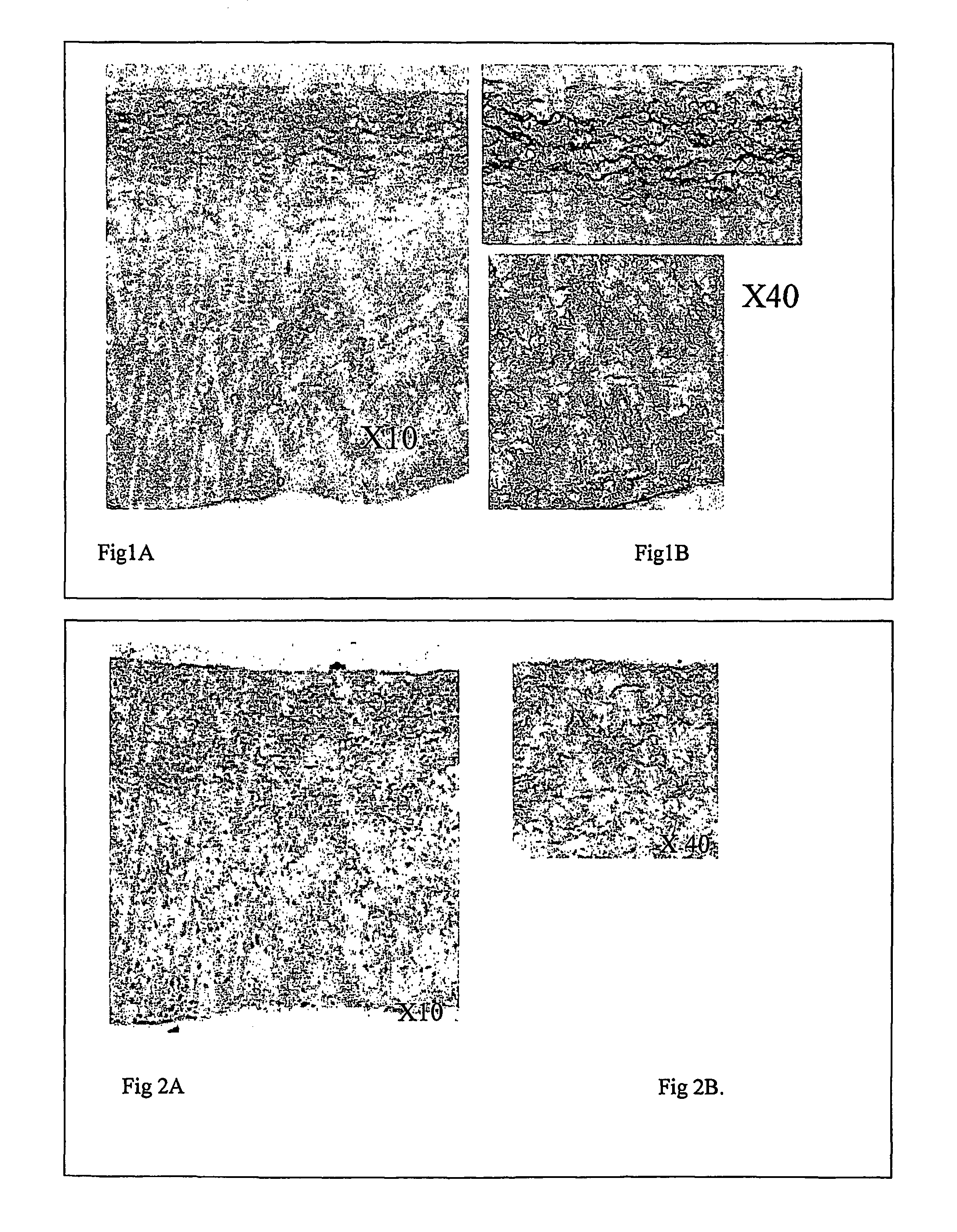Decellularisation of matrices
a matrices and matrix technology, applied in the field of decellularisation of matrices, can solve the problems of inherently toxic most of protease inhibitors, serious limitations of methods, and deleterious effects of sds on heart valve extracellular matrix
- Summary
- Abstract
- Description
- Claims
- Application Information
AI Technical Summary
Benefits of technology
Problems solved by technology
Method used
Image
Examples
example 1
Porcine Aortic Valves
[0058]Porcine hearts were procured from a local abattoir within 2 hours of slaughter and transported on ice to the laboratory. On arrival at the laboratory, aortic valve roots were dissected from the heart and washed in transport solution [Hanks' balanced salt solution (HBSS), 10 KIU / ml Aprotinin, 10 u / ml penicillin, 100 μg / ml streptomycin, 100 U / ml Nystatin, 10 mM HEPES pH7.6). The aortic valves were incubated overnight (14 hours) in hypotonic tris buffer (10 mM tris pH8, 0.1% (w / v) ethylene diamine tetraacetic acid (tDTA), 10 KIU Aprotinin in distilled water DW).
[0059]Subsequently, the aortic valves were incubated for 24 hours with shaking at ambient temperature in (0.05%-0.1%) (w / v) sodium dodecyl sulphate (SDS) or 0.5% sodium deoxycholate in hypotonic tris buffer. They were then washed (×3) with tris buffered saline (0.15M NaCl, 0.05M tris pH 7.6 in DW) containing protease inhibitors (0.1% w / v EDTA and 10 KIU / ml Aprotinin). They were then subjected to a furt...
example 2
Porcine Patella Tendons
[0061]Porcine patella tendons were dissected and then washed in PBS. The tendons were incubated overnight (24 hours) in hypotonic Tris buffer (10 mM Tris pH 8, 0.1% ethylene diamine tetraacetate (EDTA), 10 KIU Aprotinin in distilled water (DW)]. Tendons were subsequently incubated for a further 24 hours with shaking at ambient temperature in 0.03-0.1% w / v sodium dodecyl sulphate (SDS) or 0.5% sodium deoxycholate in hypotonic Tris buffer. They were then washed (×3) with PBS containing protease inhibitors (0.1% EDTA and 10 KIU / ml Aprotinin).
[0062]With reference to FIG. 3A there is shown a photomicrograph of fresh porcine patella tendon, stained with heamatoxylin and eosin (×400). FIG. 3B shows a photomicrograph of porcine patellar tendon following de-cellularisation treatment as described above and also stained with heamatoxylin and eosin (×400). It is apparent from comparing the Figures that decellularisation has been achieved whilst maintaining the histoarchit...
PUM
| Property | Measurement | Unit |
|---|---|---|
| concentration | aaaaa | aaaaa |
| concentration | aaaaa | aaaaa |
| half life | aaaaa | aaaaa |
Abstract
Description
Claims
Application Information
 Login to View More
Login to View More - R&D
- Intellectual Property
- Life Sciences
- Materials
- Tech Scout
- Unparalleled Data Quality
- Higher Quality Content
- 60% Fewer Hallucinations
Browse by: Latest US Patents, China's latest patents, Technical Efficacy Thesaurus, Application Domain, Technology Topic, Popular Technical Reports.
© 2025 PatSnap. All rights reserved.Legal|Privacy policy|Modern Slavery Act Transparency Statement|Sitemap|About US| Contact US: help@patsnap.com


